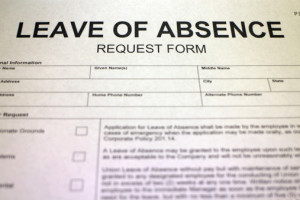 Helping employees easily take protected leave during crises is one of the best ways to ensure that employees feel cared for. However, many companies are still processing LOA requests the old-fashioned way: managing them with MS Excel, tracking them with calendar entries and filling out documents by hand. For several companies I have worked with, this process took an average of eight hours per protected LOA request.
Helping employees easily take protected leave during crises is one of the best ways to ensure that employees feel cared for. However, many companies are still processing LOA requests the old-fashioned way: managing them with MS Excel, tracking them with calendar entries and filling out documents by hand. For several companies I have worked with, this process took an average of eight hours per protected LOA request.
Using No-Code Business Process Platforms to Automate LOA
Manual processes are the primary bottleneck to LOA process efficiency. To digitize, companies could attempt to code custom workflows, but many companies will have neither the personnel nor time to take on the task. Because of this, some companies opt to outsource LOA management, but that can cost upwards of $400 per LOA case. Luckily, there’s a better option: no-code business process automation (BPA) platforms.
These platforms operate using logic-driven systems and a visual development interface, allowing workflows to be digitized simply by dragging and dropping custom pieces of a visual workflow chart. To get started, companies simply identify the steps in existing workflows and input them into the visual workflow chart. No-code partners will then assist with custom automation triggers for each step.
Five Key Things to Look for in an Automation Platform for LOA
Full compliance with federal and state rules. With rules and forms changing constantly, managing compliance can be difficult for even the most well-staffed HR departments. With the right BPA platform, rules will automatically change depending on new legislation and reduce exposure to legal challenges.
Integrated recommendation engine. BPA platforms have turned the vast human knowledge in LOA into an integrated guidance engine that recommends the appropriate leave based on the leave reasons chosen by the team member.
PREMIUM CONTENT: Using AI: Risks and Challenges
Integration with your HRIS. Companies can realize the full ROI of their current HRIS by seamlessly integrating with a BPA platform. However, not all automation platforms are designed for the intricacies of LOA automation. Unless the platforms are integrated with the LOA system, there is always a duplication of work involved. Therefore, it is important to understand the level of integration offered to reap the full benefits of LOA automation.
Flexibility. One of the key benefits of a no-code automation platform is flexibility. One key question to ask when considering a platform for LOA automation: Can you shape the platform exactly to your processes and needs? For instance, can it send notifications to the supervisor during a specific milestone in your process? If your employees respond better to text, you will also want to see if it can send text messages to the employee at a given milestone.
Process focus. While some BPA platforms focus on data management, HR departments require an automation platform with a process focus. Because good data is a byproduct of good processes, when a BPA focuses on processes, the result is both streamlined processes and high quality data.
What Will Your Employees Remember from Pivotal Moments?
In an age of job-hopping and talent shortages, companies need, now more than ever, to make sure their employees are well cared for. When it comes to caring for your employees, how you treat them during crises will shape how they see you more than any other time. The first step of getting this right is making sure that they’re able to take the leave they need, hassle free, and nothing makes this easier than no-code business process automation platforms.








